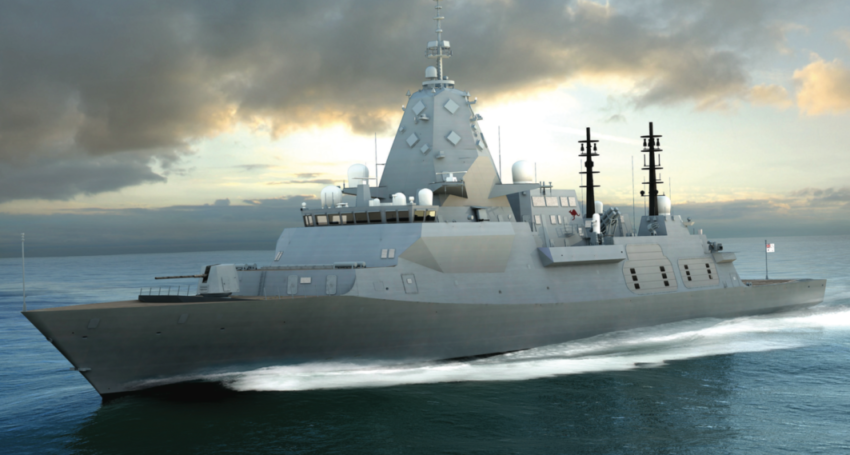BAE Systems wins $35 billion bid to build war frigates in South Australia
Defence
ASC Shipbuilding will build nine anti-submarine warfare frigates for the Australian Navy in Adelaide after BAE Systems was chosen as the preferred tenderer for the $35 billion SEA 5000 project.

Sign up to receive notifications about new stories in this category.
Thank you for subscribing to story notifications.

The Global Combat Ship – Australia is based on BAE Systems’ Type 26 frigate, one of the world’s most advanced anti-submarine warships, which the company is currently constructing in Glasgow for the British Navy.
The BAE Systems design was selected over Italian company Fincantieri and Spanish ship builder Navantia for the SEA 5000 project. The ships, named the Hunter class, will be built at ASC’s headquarters, the Osborne Naval Shipyard in Adelaide, South Australia.
ASC Shipbuilding, currently wholly owned by the Australian Government, will become a subsidiary of BAE Systems during the build. At the end of the program the Commonwealth will resume complete ownership of ASC Shipbuilding.
The Hunter class will have the capability to conduct a variety of missions independently, or as part of a task group, with sufficient range and endurance to operate effectively throughout the region. The frigates will also have the flexibility to support non-warfare roles such as humanitarian assistance and disaster relief.
Incorporating the leading edge Australian-developed CEA Phased-Array Radar and the US Navy’s Aegis combat management system, with an Australian interface developed by Saab Australia, the Hunter class will be one of the most capable warships in the world.
The project is expected to create and sustain 4000 highly skilled jobs, providing a significant contribution to the development of Australia’s continuous naval shipbuilding capability and a boost to the nation’s manufacturing industry.
“BAE Systems’ selection as preferred tenderer for SEA 5000 reinforces our position as a leading designer and builder of complex maritime platforms,” BAE Systems Chief Executive, Charles Woodburn.
“I am proud that our world class anti-submarine warfare design and our approach to transferring technology and skills to the nations in which we work is expected to contribute to the development of an enduring world-class naval shipbuilding industry in Australia.”
Osborne Naval Shipyard has been the home of the Air Warfare Destroyer project for more than a decade with the third and final next generation warship due for completion towards the end of this year. The site was also where six Collins Class submarines were built for the Australian Navy. The majority of the ongoing submarine maintenance is still undertaken at Osborne.
BAE Systems will soon commence negotiations with Australia’s Department of Defence on the initial design part of the contract, which is expected to be in place by the end of 2018, with production expected to commence in 2020.
Australian Prime Minister Malcolm Turnbull told ABC Radio during the announcement that Adelaide would cement itself as a centre of naval shipbuilding.
“These are cutting-edge industries and the benefits for South Australia are immense,” he said.
“You’ll see an ecosystem based on engineering, on technology, on advanced manufacturing, will start to grow here in South Australia.”
The SEA 5000 project is not expected to affect other work at Osborne such as the building of the first two Offshore Patrol Vessels, the last of the Air Warfare Destroyers, or the sustainment of the Collins Class submarines and will not preclude ASC Group from pursuing future shipbuilding opportunities.
Jump to next article




